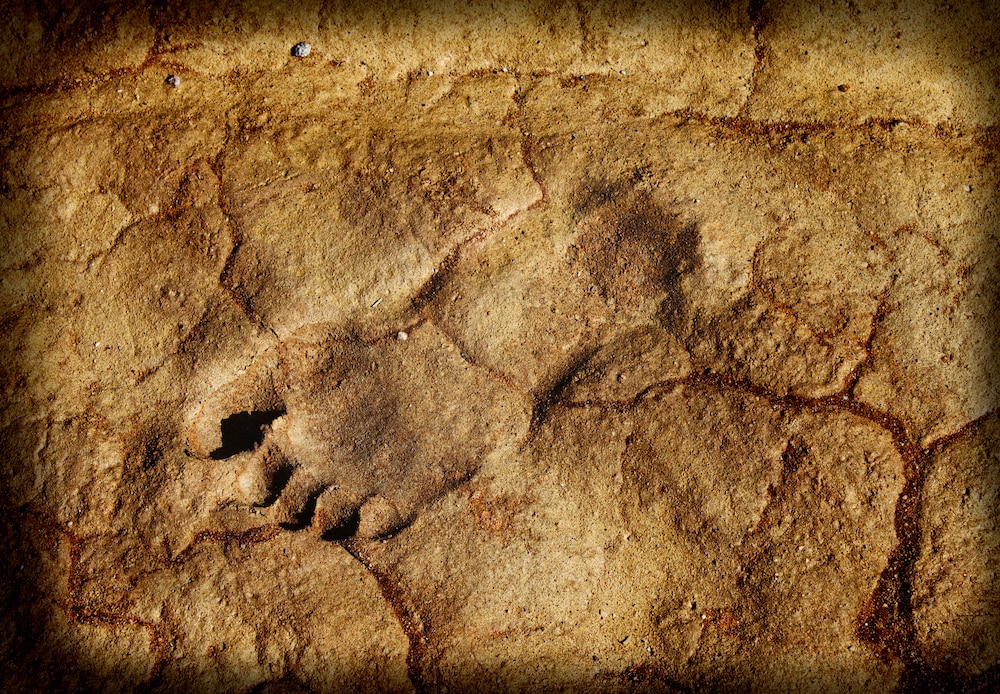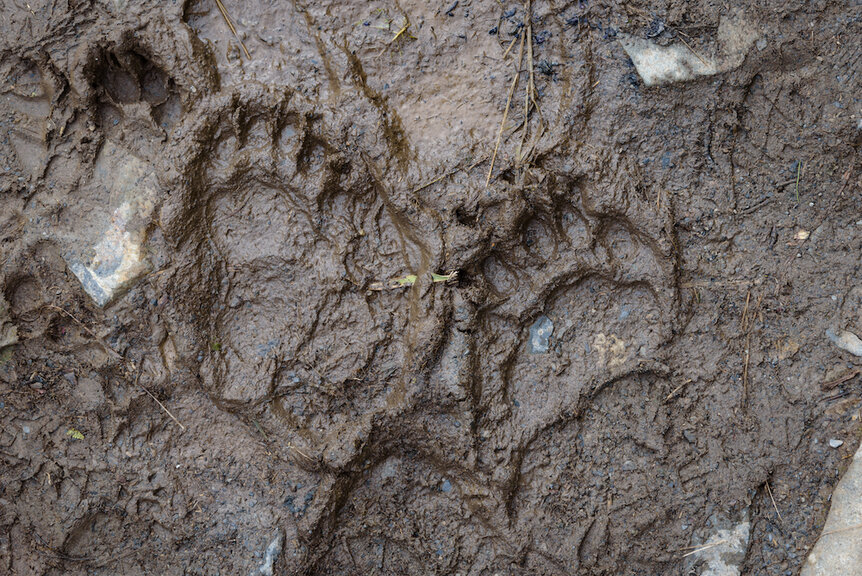Create a free profile to get unlimited access to exclusive videos, sweepstakes, and more!
Chimps? Nah, this mysterious human ancestor walked more like a bear
What left behind mysterious footprints millions of years ago? It wasn't a bear but a human ancestor.

When we think of human ancestors, we tend to think of primates, so why were 3.7-million-year-old hominid footprints mistaken for something else?
The prints this unknown species left behind were weird even for a more primitive relative of ours. They were first discovered during the 1970s at an archaeological site in Laetoli, Tanzania. Laetoli Site A is known for footprints from Australopithicus afarensis, like the famous skeleton Lucy, which a NASA mission was named after. It soon became apparent that whatever was at Lateoli Site G hadn’t come from Australopithicus.
Confused archaeologists eventually came to the conclusion that the prints, which were unlike any hominid prints they had ever seen, must have been made by a bear stumbling around on its hind legs. Now another look has proven that these really were prints from an unnamed predecessor of homo sapiens. Researcher Jeremy DeSilva, who coauthored a study recently published in Nature, was wowed by the rediscovery.
“What other mammal occasionally moves on two legs and heel strikes when it walks? Bears,” he told SYFY WIRE. “When non-human animals walk on two legs, they cannot balance on a single leg and so they fall to the side, wobbling back and forth as they move forward.”
Humans were not always so great at getting around on two legs. Early hominids that had transitioned from climbing trees to walking on land evolved changes to the position of their hip muscles. They didn’t get used to it immediately. However, because humans who had just become bipedal are though to have balanced on one leg at a time and made their way forward in a straight line. These footprints from Site G were still more widely spaced than the footprints of the bears and chimps they were compared to.
Part of the reason that the Site G footprints were not believed to be from hominids is that they were just so different from the Australopithicus footprints at Site A. Hypothesizing that they were hominid tracks would have cast doubt on the origin of the Site A prints. What was missing form the investigation back then was a thorough comparison to actual bear prints. Hominids had larger heels that pressed harder into the ground and an especially large big toe not found in bears, which set them apart.
“The footprints at site A appear to be more ape-like than the footprints at sites G and S, so they could be from a hominin that evolved before Australopithecus afarensis and continued to live along side Lucy and her kind into the Pliocene,” DeSilva said.
These prints diverged so much from those of Australopithicus because that hominid’s feet were much wider (compared to their length), and the big toe was unlike other hominid footprints. The Site A and Site G prints were about as different as human prints are from a chimp’s. What chimps have in common with bears is that their heels are pretty narrow relative to their forefeet, while the mystery hominid’s heels were much wider. It must have shambled along, not unlike an extra on The Walking Dead.
More confusing was how the size difference between the big toe and second toe was more similar between humans and chimps than humans and bears. The Site G prints kept showing similarities and differences with bears and chimps, which is why the research team needed actual tracks to find out what they were for real. They gathered chimp tracks from a sanctuary and lured black bears with treats. The bears would have to walk through the mud on their hind legs to get to the treat on the other side.
It was finally proven that bear tracks were way too wide to have matched the narrower prints in the Site G trackway, which also showed sings of cross-stepping. Humans don’t usually move that way — but uneven surfaces can force them to. Knowing that the Site G footprints belonged to a hominid proves there were at least two hominid species living alongside one another, with different foot morphology and methods of walking. Human walking may have evolved in much less linear way than visuals like this suggest.
“We still have a lot of questions about the origins and evolution of bipedal locomotion,” DeSilva said. “These rediscovered footprints demonstrate that the evolution of upright walking was more complicated and more interesting than we previously thought.”



























